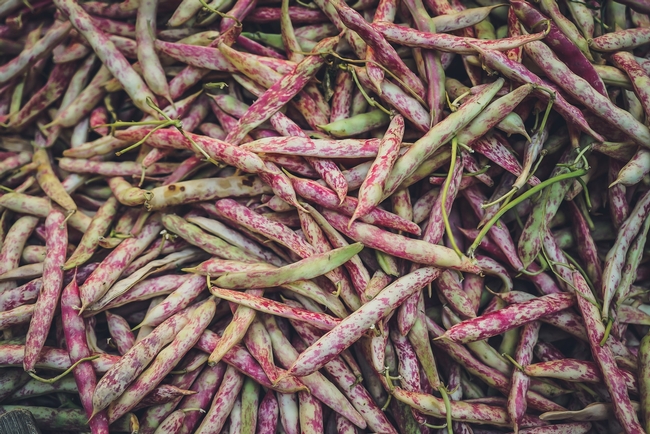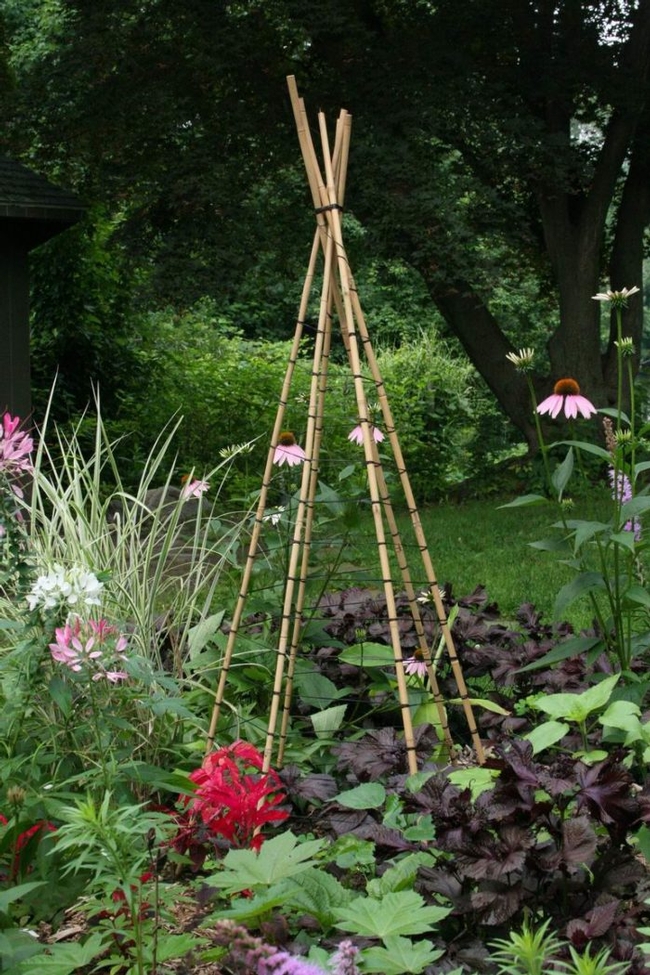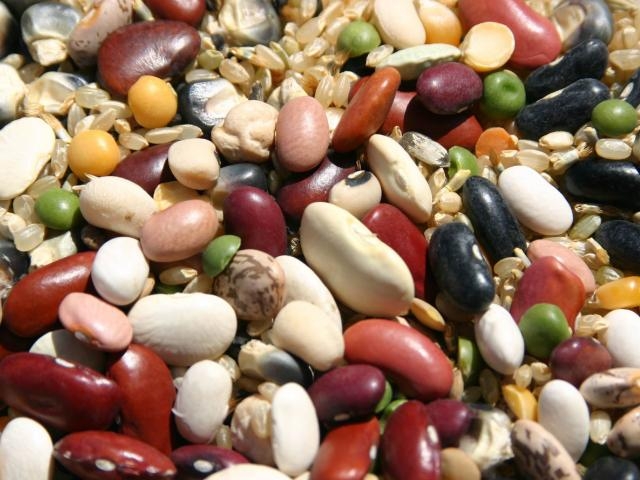Somehow we missed having this posted for June 20. Catch up now! Article for June 27 will be posted June 29.
By Pat Hitchcock, U. C. Master Gardener of Napa County
Plant some beans!
Warm settled weather found me planting beans in the garden. First in were some seeds from packets that had dates prior to 2018—in other words, old seed. These were a mix of bush types: Roc d'Or (yellow), Provider (green), Royalty Purple Pod (purple) and a tricolor mix.
All sprouted except the green ones. Since bush beans tend to be ready to eat earlier than pole beans, I'm anticipating that we will be eating these first.
Next I planted some Romano pole bean seeds that I saved from last year's Master Gardener field trial. I really liked the two climbing varieties called Helda and Golden Gate. Being fresh, these seeds had a 100 percent germination rate. By the beginning of June, they had climbed to the top of the six-foot-tall tuteur I set up for them.
In the garden, a tuteur is a tall support structure. I purchased two at a local nursery a few years ago, and I added extra strings to them for the beans to twine around. It worked great for these beans last year and is super easy: I just put it in the ground where the beans can reach it.
I don't consider the summer garden to be complete without beans for drying. A couple of years ago Leonardo Urena came to one of our Master Gardener seminars to talk about growing giant pumpkins. He brought with him some beans that he likes to grow every summer: Coco Blanco and Cranberry Bush.
I grew out a few seeds of these last year and wanted to give them another try. Both are bush types; these were the next to get planted. They germinated well and are growing sturdily in the garden. I have noticed that the Coco Blanco have suffered some scorch in the recent hot spells we've had, but the plants are still growing fast. These will be ready to harvest after they form full pods and start to dry at the end of the summer.
I also planted two pole beans for drying. One is Christmas Lima, which I planted from a one-pound package I bought from Rancho Gordo. The other is a bean I call Kosovo, which was distributed to Master Gardeners several years ago by another seminar speaker. They look an awful lot like Eye of the Goat beans to me. Both of these bean types are vigorous climbers, so I set some poles in the ground and set up strings for them to climb as I don't have any more tuteurs.
You'd think that would be enough beans for one family. In fact, it might be too much, but my bean planting was still not finished. Our Master Gardener field trials group decided to grow out some different Romano beans this year. So, finally, I planted ten seeds each of three kinds of Romano beans: Musica, Violet-Podded and Capitano.
I planted Musica around the second of my tuteurs. Violet-Podded got a repurposed umbrella skeleton and Capitano, being a bush type, has a short metal cage for support. All of these germinated well, although I've lost some plants to the heat.
Out of all the bean varieties I've planted, only the Musica are being chewed up by something. Sneaking out after dark in my pajamas with a flashlight, I discovered earwigs munching happily on them. The next day I put out some rolled-up newspaper in hopes of trapping the hungry critters. I expect the beans to outgrow the munching soon.
I love to grow beans. I find that they germinate readily, grow without too much fuss and provide quite a bit of food for the effort. I try to plant twice as many seeds as the number of plants I want to allow for germination issues, insect predation or other problems. I never bother to thin them if they all sprout, and I always get more beans than I can eat.
Here's a hint: June is not too late to plant beans in our climate. While there may not be enough time for dry beans to mature (one source I consulted said this would take about 100 days), bush beans for fresh eating are ready in 50 to 60 days according to Johnny's Seeds. Pole beans will take a week or two longer but then produce longer.
Be brave and plant a couple of different varieties: “green” beans come in yellow and purple as well as green, making your dinner table that much more interesting.
The UC Master Gardeners of Napa County are volunteers who provide University of California research-based information on home gardening. To find out more about home gardening or upcoming programs, visit the Master Gardener website (napamg.ucanr.edu). Our office is temporarily closed but we are answering questions remotely and by email. Send your gardening questions to mastergardeners@countyofnapa.org or leave a phone message at 707-253-4143 and a Master Gardener will respond shortly.
Online searching for beans by name will provide photos of all the beans Pat Hitchcock names in this article.
The University of California's Vegetable Research and Information Center is just packed with vegetable growing information. Find it here:
https://vric.ucdavis.edu/main/veg_info.htm
Attached Images:



